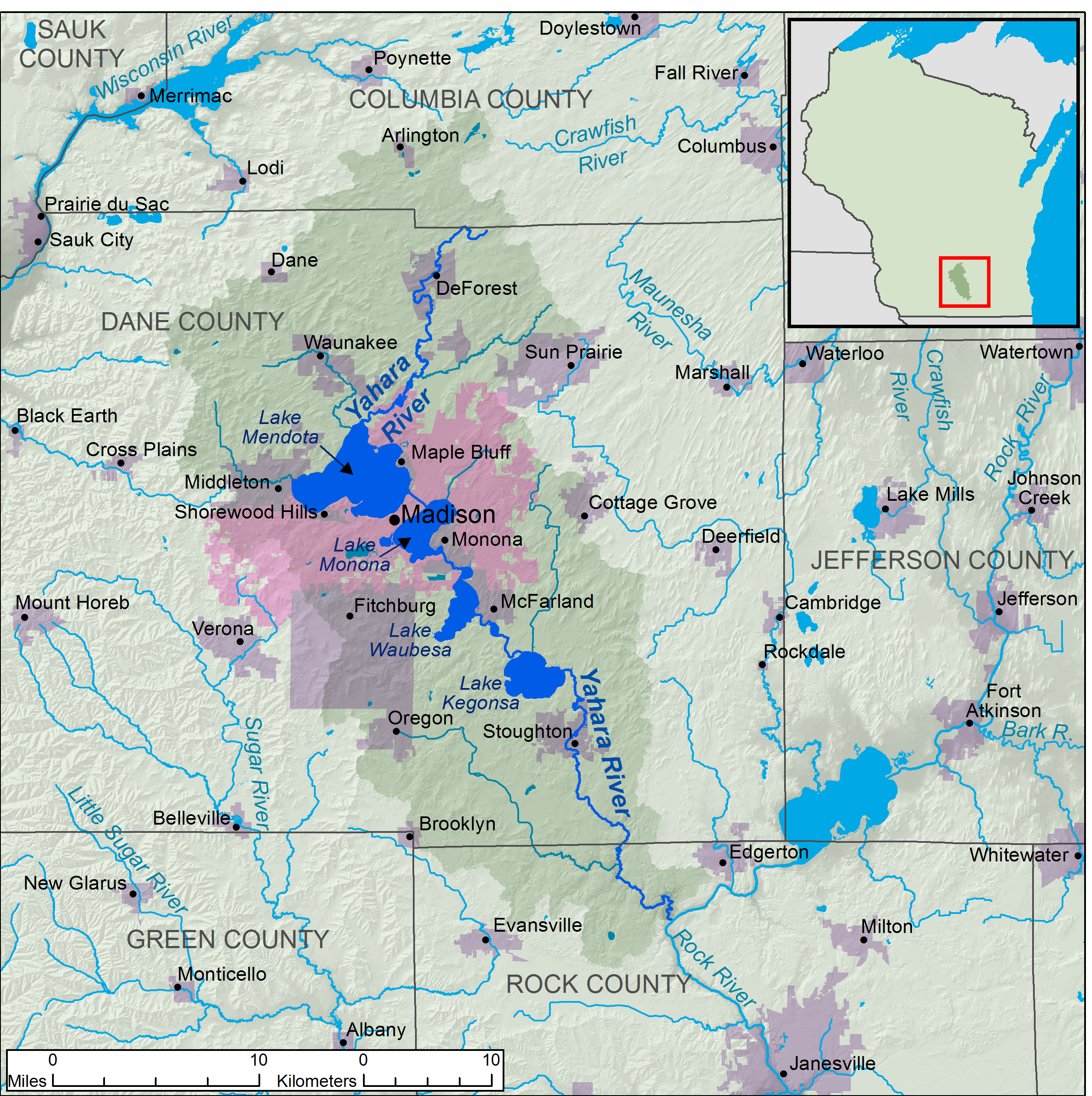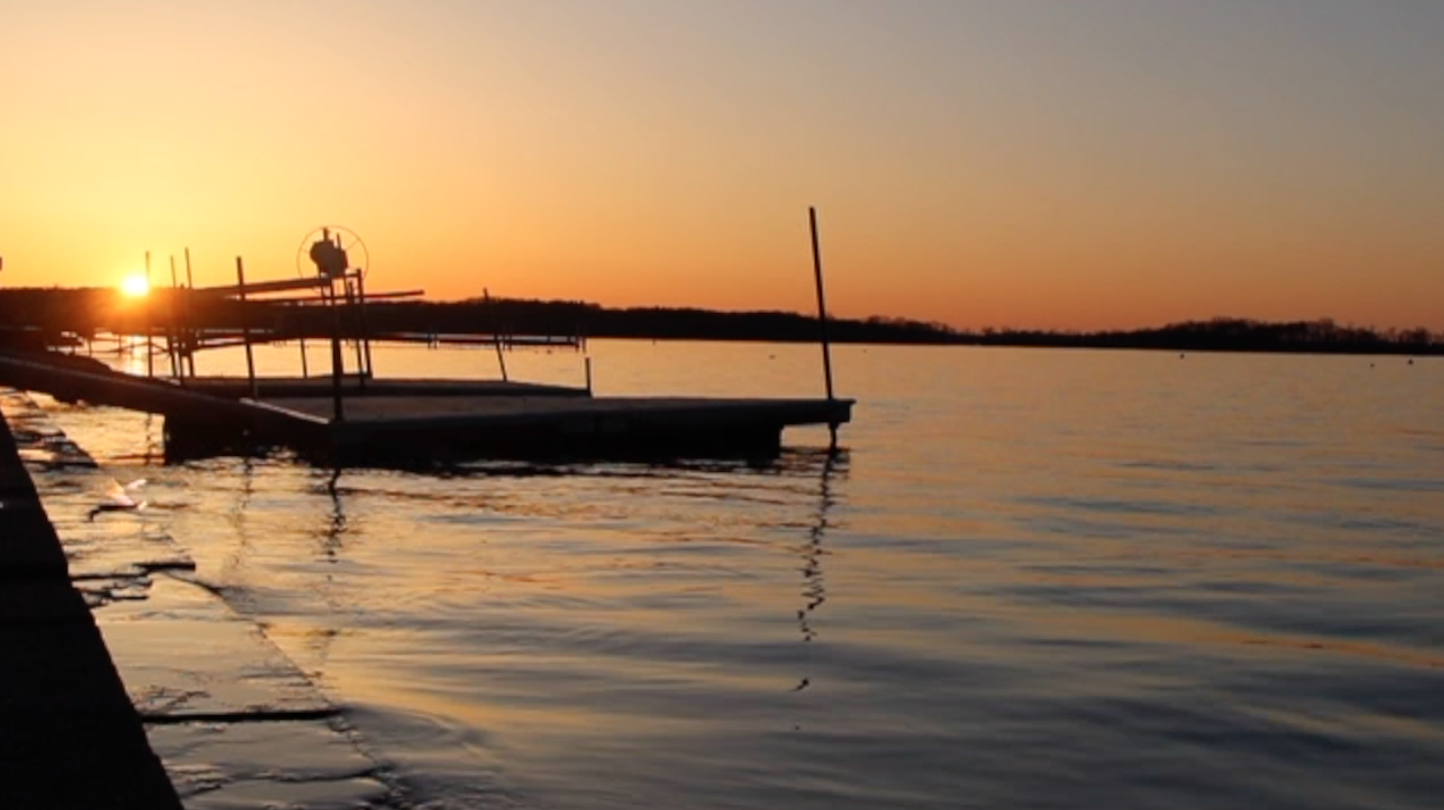By Laura Bunn
They are not known as The Great Lakes, but Dane County’s five area lakes are an integral part of what make it great. The future of Dane County’s lakes depends on reducing the amount of pollutants flowing into the Yahara Watershed.

Phosphorus runoff from both rural and urban sources specifically threatens the water quality. Protecting lakes Mendota, Monona, Wingra, Kegonsa and Waubesa is important to preserve Dane County’s environmental, economic and recreational qualities.
Dane County Board Supervisor Nikki Jones said this issue is especially important to solve because the lakes define the county and represent a core part of its identity.
“One of the greatest and most beautiful features of the county are our lakes, and so we need to do what we can to clean up what we’ve done from the past,” Jones said. “Now that we are more knowledgeable, we need to make certain that what we are doing and practicing in going forward is in good keeping with making certain that our lakes are protected and clean for the future.”
The city and county are already making progress to make the lakes healthier. The Clean Lakes Alliance released its annual “State of the Lakes” report this week, tracking water quality and phosphorus reduction in the Yahara chain of lakes. In 2017, partners prevented 14,000 pounds of phosphorus from reaching the lakes, an amount that could feed almost seven million pounds of algae.
While this report shows important progress, finding the proper combination of solutions will prove critical to fixing the problem going forward.
According to Dave Taylor, director of the Yahara Watershed Improvement Network (WINS), one of the biggest challenges is getting different entities, unaccustomed to working together, to unite in working toward a common solution.
Taylor said, however, they are able to overcome this challenge and get different groups to collaborate and work cooperatively because of the mutual concern over the watershed’s future health and prosperity.

“Basically everyone in the Madison area either lives, works, plays, or recreates at the Yahara River Watershed,” Taylor said. “I think everybody has an interest in improving water quality and leaving their piece of the watershed in a little better place than where they found it.”
Current efforts aim to curb the runoff, specifically from rural sources. In 2016, Dane County created the Healthy Farms, Healthy Lakes Task Force to make recommendations for phosphorus reductions in surface waters. With their first official meeting in July 2017, members include a mix of farmers, government representatives, UW professors and researchers and advocacy groups such as the Clean Lakes Alliance and Yahara Pride Farms.
The resolution creating the Healthy Farms, Healthy Lakes Task Force said that members are prioritizing attention to agricultural sources. According to the “Yahara CLEAN Strategic Action Plan for Phosphorus Reduction,” rural actions must account for about 70 percent of the phosphorus reduction load in the Yahara Watershed.
A challenge to meeting this goal in rural areas is to find and implement policies and practices that effectively remove phosphorus, while also providing sustainable and healthy farming in the Yahara Watershed.
Rebecca Larson, a professor of biological systems engineering at UW-Madison, said finding a solution that considers both environmental concerns and challenges faced by farmers proves crucial.
“It’s really important that we find ways feasibly for farmers to continue to farm and do the things to provide us our food, while also helping them to manage some of the things important to use, like the environment,” Larson said.
Dane County Board Supervisor Nikki Jones represents District 28 in the Northwest corner of Dane County, with a large farming community. A member of the Healthy Farms, Healthy Lakes Task Force, she said that it is also important to acknowledge the work farmers already do to protect our land.
“I think farmers have historically been the ones most connected to the land and with great use of the land and now that there are more practices and better practices, it’s just getting everyone to adopt them,” Jones said.
Rural and agricultural areas certainly contribute to the phosphorus runoff through soil, manure and commercial fertilizers. Still, it’s not a problem caused only by farms. Taylor said that it’s important to understand that the sources of phosphorous to rivers, streams and lakes in the Yahara Watershed are varied and include both rural and also urban sources.
“If we’re really going to address water quality, we need to do that in a holistic manner,” Taylor said. “That would include looking at phosphorus and coming up with recommendations that go beyond looking at farms but would look overall at communities as a whole.”

Jones agreed and said the runoff problem is so much bigger than just farms and is connected to increasing urban development and ongoing building construction. Dane County is Wisconsin’s fastest growing county, adding over 6,000 residents in 2017. Dane County’s land, however, is still over 50 percent agricultural.
“This creates a juxtaposition,” Jones said. “It’s a push-pull between wanting to keep rural parts of Dane County rural and to keep them in farming and wanting also to have more places for people to live.”
Due to this increasing urban population, phosphorus reduction also depends on more awareness in urban areas. Taylor said that another major source of phosphorus in urban areas is leaves falling onto city streets.
“From the standpoint of what an individual citizen can do, paying attention to how they manage leaves keeping leaves out of the street, maybe composting or collecting their leaves and taking them to a composting site, are a very concrete thing that an average person could do to improve water quality in the watershed,” Taylor said.
Progress is also happening as a community effort. The Clean Lakes Alliance continues along their plan to reduce phosphorus by 50 percent in area lakes. The Dane County Healthy Farms, Healthy Lakes Task Force seeks to draft a report by the end of 2018 to use as a blueprint for future action.
Dane County, the City of Madison and other communities and local organizations agree that continuing to make progress will be crucial to preserving area lakes.

